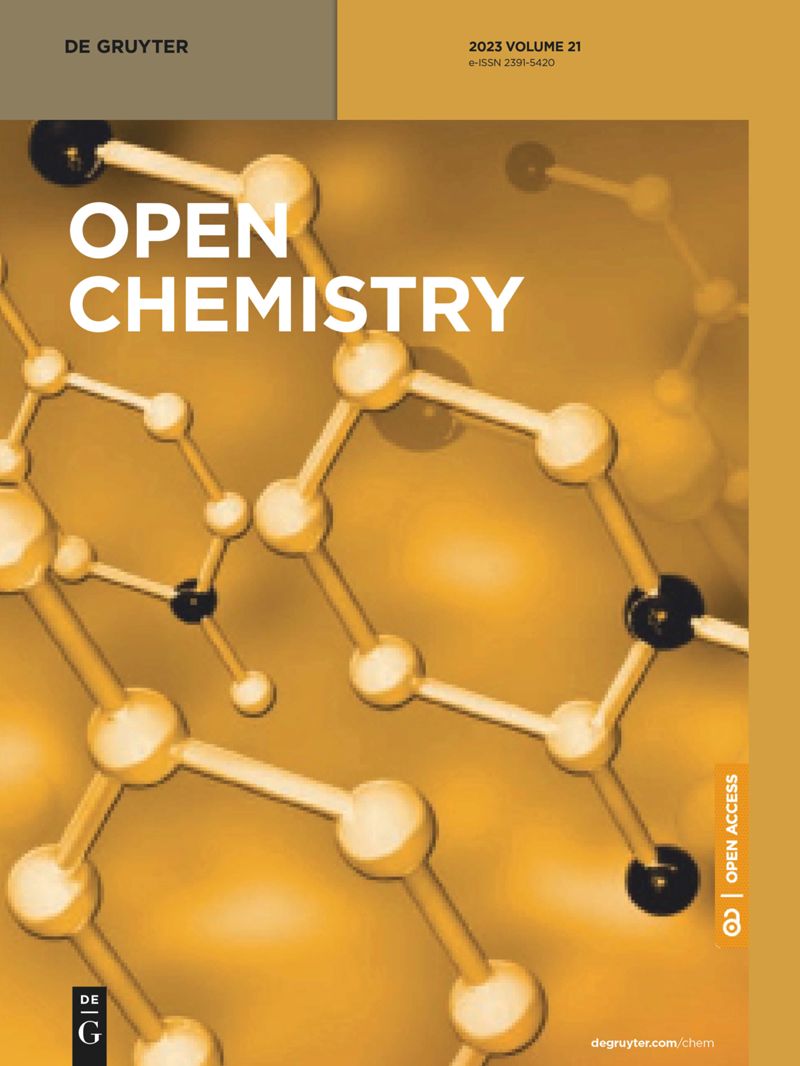研究氯化锌改性多孔碳去除水中磺胺嘧啶的吸附机理
IF 1.9
4区 化学
Q3 CHEMISTRY, MULTIDISCIPLINARY
引用次数: 0
摘要
磺胺嘧啶(SDZ)是医药、水产养殖和畜牧业中常用的抗生素。然而,其滥用导致其释放到土壤和水环境中,逐渐对环境和人类健康构成威胁。本研究选择棉浆、杨树锯末和玉米秸秆为原料。以氯化锌(ZnCl2)为改性剂,在不同的碳化温度(400 和 800°C)下进行热解,制备改性多孔碳。目的是研究改性多孔碳在水环境中对 SDZ 的吸附效果和机理,以及碳源中不同生物质组分对吸附效果的影响。通过多种表征手段对改性多孔炭的理化性质进行了表征,结果表明高温和改性作用使吸附材料具有更大的比表面积和更丰富的孔隙结构、更高的芳香度、更高的石墨化程度等,有利于SDZ的吸附。其中,CCPZ800 对 SDZ 的饱和吸附量最高,Q max = 425.45 mg/g。通过改变初始条件进行吸附实验,并结合水热炭材料对SDZ的吸附,拟合动力学吸附和等温吸附,进一步解释改性多孔炭对SDZ的吸附机理。结果表明,改性多孔炭对SDZ的吸附符合准二级动力学模型和Freundlich等温吸附模型。SDZ在改性多孔碳上的吸附机理遵循多分子层吸附,其中化学吸附是主导过程。物理吸附和化学吸附同时发生,主要的吸附机理是π-π共轭作用。此外,不同碳源生物质的成分分布会导致热解模式和热解产物的变化,进而影响吸附。通过分析生物质成分的变化对 SDZ 吸附效果的影响,可以得出结论:碳源中纤维素含量越高,SDZ 的吸附效果越好。该研究展示了 ZnCl2 改性多孔碳在去除水中的 SDZ 方面的有效性,为该吸附剂制备原料的选择提供了启示。本文章由计算机程序翻译,如有差异,请以英文原文为准。
Investigating the adsorption mechanism of zinc chloride-modified porous carbon for sulfadiazine removal from water
Sulfadiazine (SDZ) is a commonly used antibiotic in medicine, aquaculture, and animal husbandry. However, its misuse has resulted in its release into soil and water environments, posing a gradual threat to the environment and human health. In this study, cotton pulp, poplar sawdust, and corn stover were chosen as raw materials. Zinc chloride (ZnCl2) was used as a modifier to prepare modified porous carbon through pyrolysis at different carbonization temperatures (400 and 800°C). The objective was to investigate the adsorption effect and mechanism of modified porous carbon on SDZ in aqueous environments, as well as the effect of different biomass fractions of the carbon source on the adsorption effect. The physical and chemical properties of the modified porous carbon were characterized by various means of characterization, and the results showed that the high temperature and modification effects made the adsorbent material possess a larger specific surface area and richer pore structure, higher aromaticity, higher degree of graphitization, etc., which would be beneficial for the adsorption of SDZ. Among them, CCPZ800 showed the highest saturation adsorption of SDZ, Q max = 425.45 mg/g. The adsorption experiments were carried out by changing the initial conditions and fitted with kinetic and isothermal adsorption to further explain the adsorption mechanism of modified porous carbon on SDZ in conjunction with the adsorption of SDZ by hydrothermal carbon materials. The results showed that the adsorption of modified porous carbon on SDZ conformed to the quasi-secondary kinetic and Freundlich isothermal adsorption models. Adsorption mechanism of SDZ on modified porous carbon followed a multimolecular layer adsorption, with chemical adsorption being the dominant process. Both physical adsorption and chemical adsorption occurred simultaneously, with the main adsorption mechanism being π–π conjugation. In addition, compositional distribution of biomass from different carbon sources results in variations in pyrolysis mode and pyrolysis products, which in turn affect adsorption. By analyzing the effect of variability in the composition of biomass on the adsorption effect of SDZ, it can be concluded that higher cellulose content in the carbon source leads to a better adsorption effect of SDZ. The study showcases the effectiveness of ZnCl2 -modified porous carbon in removing SDZ from water, offering insights into the selection of raw materials for this adsorbent preparation.
求助全文
通过发布文献求助,成功后即可免费获取论文全文。
去求助
来源期刊

Open Chemistry
CHEMISTRY, MULTIDISCIPLINARY-
CiteScore
3.80
自引率
4.30%
发文量
90
审稿时长
6 weeks
期刊介绍:
Open Chemistry is a peer-reviewed, open access journal that publishes original research, reviews and short communications in the fields of chemistry in an ongoing way. The central goal is to provide a hub for researchers working across all subjects to present their discoveries, and to be a forum for the discussion of the important issues in the field. The journal is the premier source for cutting edge research in fundamental chemistry and it provides high quality peer review services for its authors across the world. Moreover, it allows for libraries everywhere to avoid subscribing to multiple local publications, and to receive instead all the necessary chemistry research from a single source available to the entire scientific community.
 求助内容:
求助内容: 应助结果提醒方式:
应助结果提醒方式:


